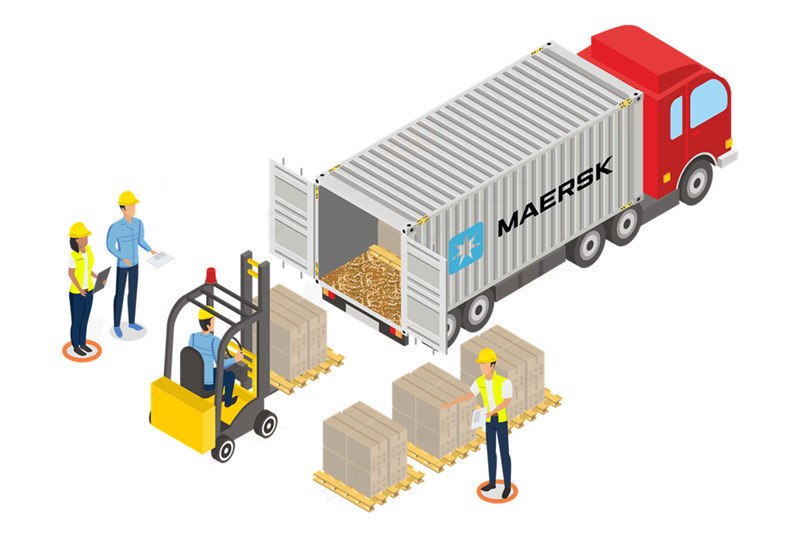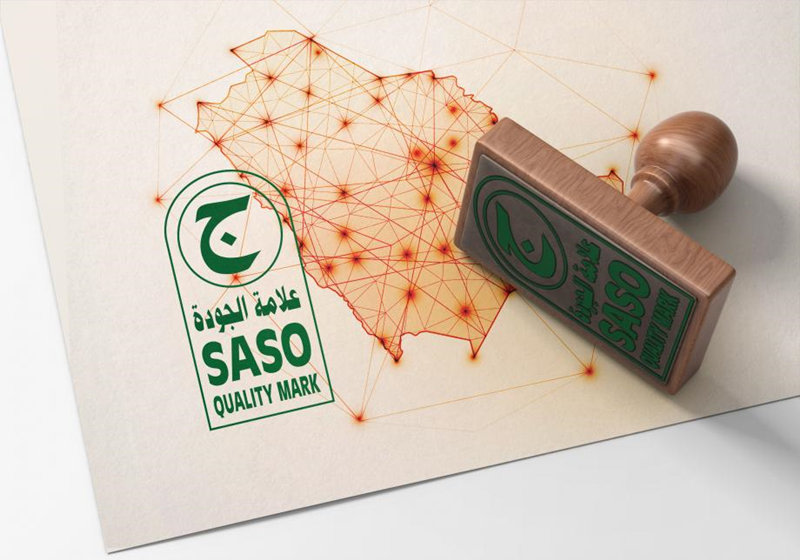Saudi Arabia is the largest market in the six Gulf States region, with a GDP per capita of over US$20,000, and the purchasing power and demand for various products is very high among the local population and market. There is almost no light industry in the country and the majority of products are imported. Therefore, if Saudi importers want to import products from other countries to Saudi Arabia, smooth customs clearance is essential. And Saudi Arabia is known as one of the most difficult countries in the world to clear customs. Inspection and supervision of goods, checking of customs clearance documents, confirmation of Product-related Certification, and the process of import clearance are the key points that need to be noted by Saudi importers in order to complete smooth customs clearance.
I. Goods Inspection and Supervision
II. Customs Clearance Documents
III. Product-related Certification
IV. Customs Clearance Process
I. Goods Inspection and Supervision
In order to ensure that the imported products comply with the regulations of the local Saudi market and that the goods can complete the customs clearance process smoothly, the importer can inspect and supervise the goods in person or appoint a third-party conformity assessment body before loading the goods.
1. Labels, instructions and warnings should be in Arabic or English. For hand-held power tools and household goods, instructions in Arabic must be available.
2. Products and packaging must be printed with the words ‘MADE IN CHINA’, not ‘MADE IN PRC’, and must be in a non-removable form on the product and packaging, not with ordinary stickers.
3. The product label must have the name and model number.
4. Electrical products require voltage: 220V-240V or 220V; current: 60Hz or 50/60Hz; voltage frequency must include 220V/60Hz.
5. The plug must be a British three-pronged plug.
6. No SASO logo is allowed to be displayed on the product or packaging without the authorization of SASO.

II. Customs Clearance Documents
The import customs clearance documents required by Saudi Arabia Customs generally include a Certificate of Origin, Commercial Invoice, Packing List, Bill of Lading, Product-related Certification, Steamship (or airlines) Certificate, etc. When the importer receives the clearance documents provided by the exporter, he needs to focus on the following points for confirmation to ensure that the documents meet the requirements of Saudi customs clearance and avoid the seizure or return of the goods.
1. Commercial Invoice
Produced on the exporter's stationery, it contains the name and address of the shipper and consignee, and shows an accurate description of the goods and their composition. It also includes information such as the 6-digit HS code, trademark, vessel name and voyage, date of departure, port of loading, port of discharge, gross weight, net weight, quantity, unit price, total price of each commodity, total price of the goods, contents of each container, currency, letter of credit number, trade terms, etc.
Saudi Customs requires a very detailed description of the goods. Also, Commercial Invoices for goods imported into Saudi Arabia need to be certified by the exporting country's Trade Promotion Council.
2. Packing List
It needs to contain the name and address of the shipper and consignee, description of the goods, amount, gross weight, net weight, volume, packing quantity and packing method, container number, seal number, letter of credit number, etc. If the product contains animal fat, the certificate must state from which animal this fat is obtained or state that it does not contain pork or pig fat and must be signed and issued by the local health authority.
3. Certificate of Origin
This should include the vessel name and voyage, shipped on board date (as shown on the Bill of Lading), the name of the manufacturer of all goods, an address with a street name, a detailed description of all goods or components, and the name and address of the importer's company and the name of the shipping company.
In addition, there must be a paragraph stating that the document is true and accurate and signed and valid. Again, the Certificate of Origin, like the Commercial Invoice, needs to be certified by the exporting country's Trade Promotion Council.
4. Bill of Lading
According to the new requirements of the customs authorities in Jeddah, Dammam and Riyadh, all bills of lading for shipments to Saudi Arabia must show below content after the consignee's address: the Consignee Importer Number, the Consignee CR Number and the Consignee Mobile Number. If the consignee is "To Order" or "To Order of Bank" etc., the three numbers must be shown after the address of the notify party. The B/L shipment information must be consistent with the Commercial Invoice and Packing List. In addition, all bills of lading to Saudi Arabia will not be accepted in the following cases:
Where the consignee or notify party is not a company or individual registered in Arabia.
The Bill of Lading indicates that the goods will be transhipped by road to a country other than Saudi Arabia.
5. Steamship (or airlines) Certificate
The steamship certificate is attached to the Bill of Lading or airway Bill of Lading and should be issued by the s steamship (or airlines) company, with at least one original. It must be notarised and contain the following information about the vessel (or plane) as set out in the Bill of Lading or airline certificate.
Name of the vessel (or plane) and, if applicable, the previous name of the vessel (or plane)
The nationality of the vessel (or plane)
Owner of the vessel (or plane)
The name of the port (airport) where the vessel (or plane) is to call en route to the Kingdom of Saudi Arabia, including the port (airport) of loading and the port (airport) of discharge
In addition, the Steamship (or airlines) Certificate shall state that the vessel (or plane) is not calling at or calling at any port (airport) other than the port (airport) stated in this Certificate and that all information given in the Certificate is true and correct. A standard form of " Appended Declaration to the Bill of Lading" (or Airway Bill of Lading) can be obtained from the Saudi Consulates.
In addition to the above documents, if the insurance is taken out by the exporter, an insurance certificate is also required. It should be issued by an insurance company having a duly qualified appointed agent or representative in the Kingdom of Saudi Arabia, at least one original, and must include the actual amount of insurance, description and value of the goods insured, the name of the vessel, the port of loading and the port of discharge in Saudi Arabia, the name and address of the beneficiary, and the name and address of the representative in Saudi Arabia.

III. Product-related Certification
SASO stands for Saudi Arabian Standards Organisation and is responsible for setting national standards for all consumer goods, including metrology and labelling. In order to protect the country's consumers, the SASO standards are not only applicable to products imported from abroad, but also to products manufactured in Saudi Arabia. Commodity related certification SOSA/SABER/SFDA/CITC/IECEE/IECC/COO etc. needs to be completed before the goods are loaded on board or arrive at the port.
The Saudi Product Safety Scheme, or SALEEM, was introduced on a trial basis on 1 January 2018, gradually replacing the previous SASO certification system. Importers will be required to complete a Product Certificate of Conformity (PCOC) and a Shipment Certificate of Conformity (SCOC) on the SABER system for customs clearance purposes. From 2020 onwards, almost all products exported to Saudi Arabia are included in the SABER certification system. For the operation of the SABER system, you can refer to the article ‘The Entire Process that A Saudi Importer Needs to Operate on the SABER System’.

IV. Customs Clearance Process
The submission of compliant customs clearance documents and certification information is only one step in the process of completing import customs clearance. Complete customs clearance also includes the process of goods inspection, classification and tariff calculation. Import clearance is mostly entrusted to third party forwarders, but importers also need to know the whole process.
1. Customs declaration and registration
All goods entering Saudi Arabia must be registered with Saudi Customs and submitted with the required permits. If the documents are missing or incorrect, the declared goods will be detained or even returned directly to the export country.
2. Customs inspection of goods
After completing the registration declaration with the importing customs office, the customs office will check the information on the goods against the submitted documents to ensure that the goods meet the guidelines set by the local market.
3. Valuation of goods
Once Customs has completed its inspection of the goods, the entire goods will be analysed and the value of the goods will be estimated, but not for final tariff calculation as Customs will need to classify the goods.
4. Cargo classification and tariff calculation
Saudi Customs will classify the goods according to its own method of classifying goods according to their type and characteristics. After classification, the value of the goods will be reassessed and the final duties and charges will be calculated.
5. Provisions relating to prohibited imports
The process of inspection and classification may result in fines for prohibited goods. In the classification of goods, certain goods are specified in the list of prohibited goods, so in order to save this part of the cost, importers need to check in advance with Saudi Customs to distinguish prohibited goods.
6. Duty paid for customs clearance of goods
After receiving the notice of duty payment, the importer needs to pay the corresponding customs duty before the customs will allow the goods to be released. In the way of duty payment, importers can authorize freight companies to pay on their behalf or direct electronic deduction from the company's account, both of which can speed up the customs clearance process.

Although each country has its own customs clearance standards, the standards for importing goods and the documents required for customs clearance are similar. Saudi Arabia is not only the largest market in the Middle East, it is also a country where Muslim holy sites are located. The Saudi government and its customs have their own standards for the control of imported goods. Importers should take care to ensure that the goods imported are in line with Islamic teachings, but also to ensure that the rights of the people for whom they are intended are protected, that there are no fraudulent transactions, that non-compliant products are eliminated and that the goods do not affect the health and safety of consumers.